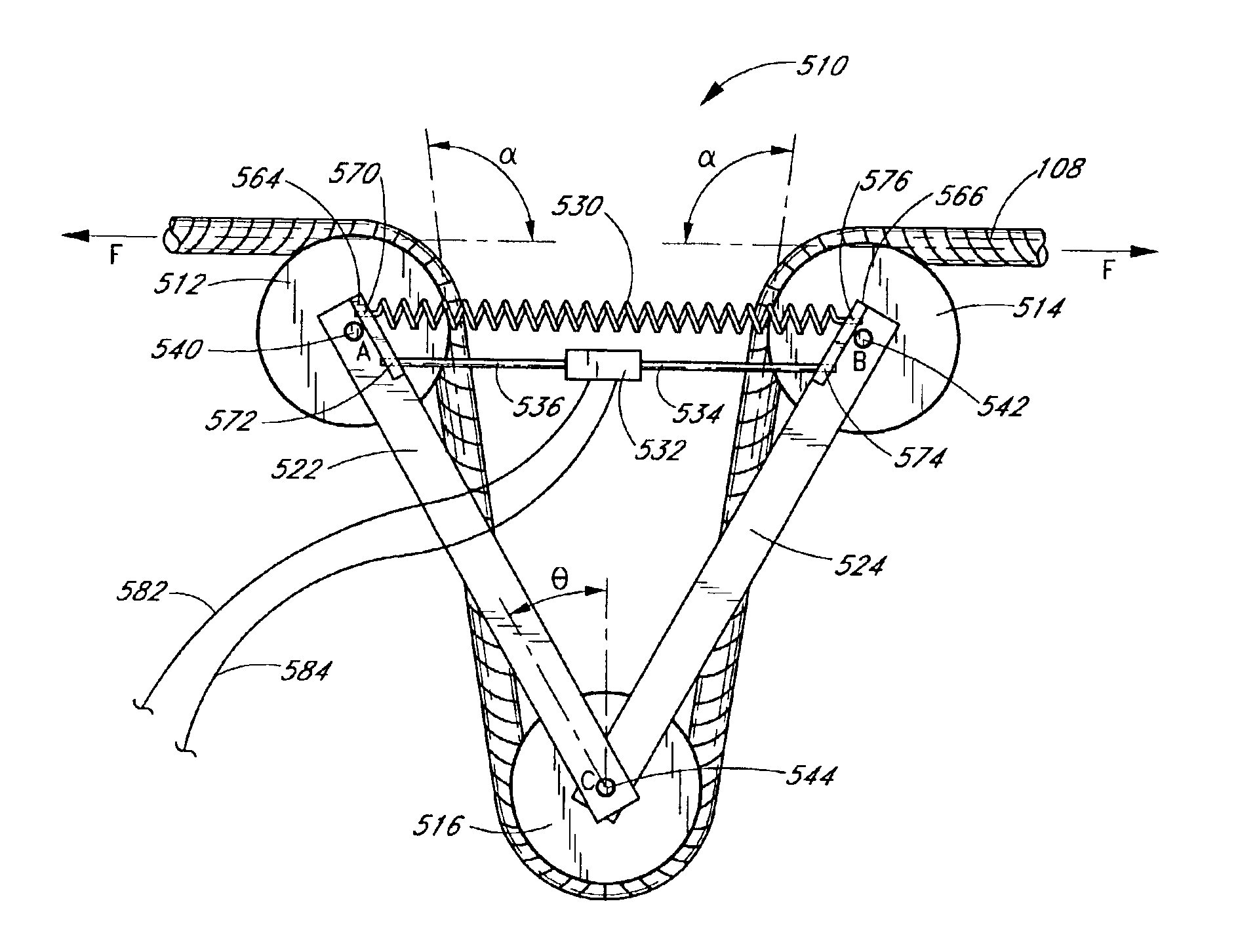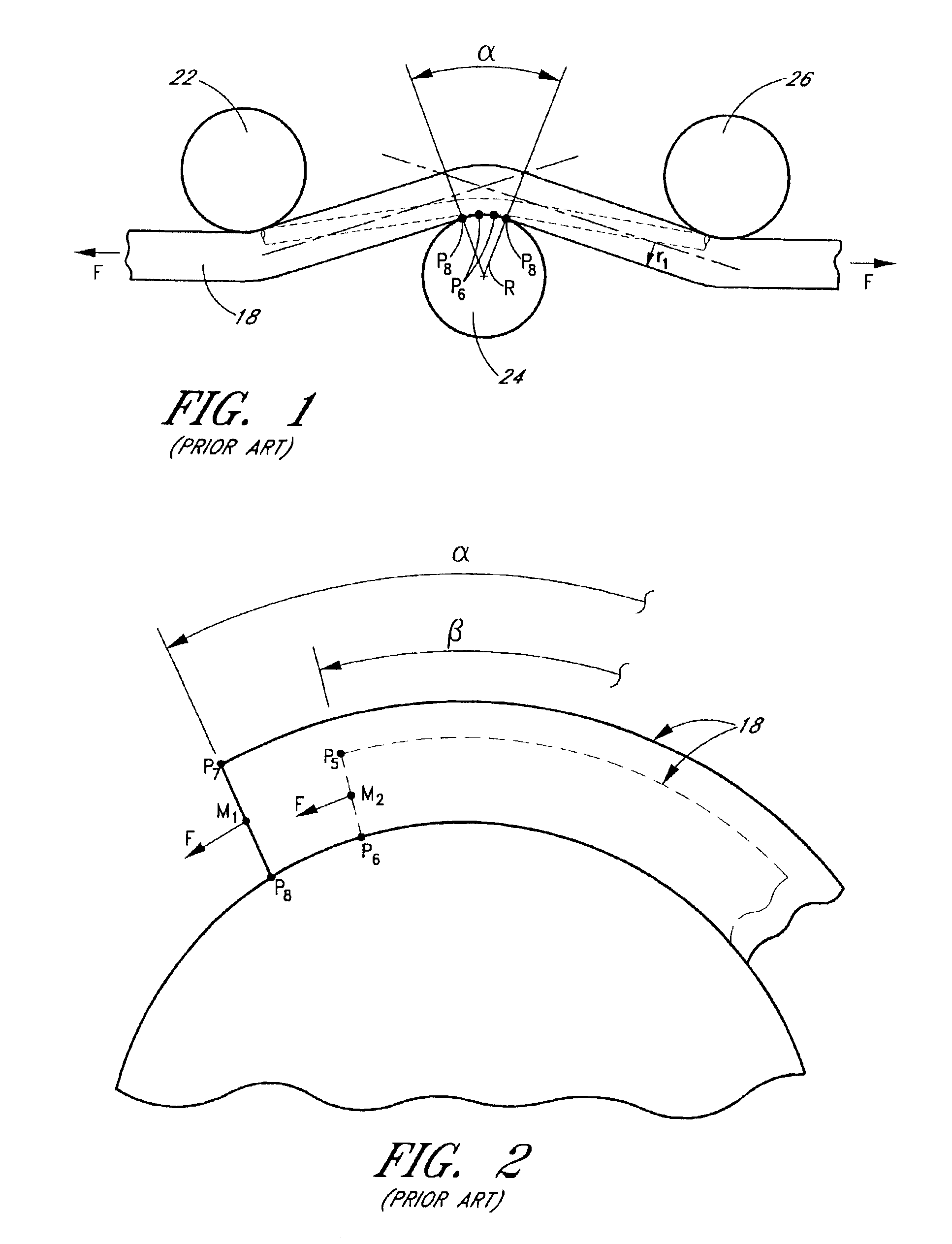Tension measuring device for mooring line
a technology a measuring device, which is applied in the direction of mooring line measurement, force/torque/work measurement apparatus, instruments, etc., can solve the problems of a mooring line bursting to a degree, a continuous rupturing of other lines, and a surge in the tension of the lin
- Summary
- Abstract
- Description
- Claims
- Application Information
AI Technical Summary
Benefits of technology
Problems solved by technology
Method used
Image
Examples
first embodiment
[0038]Referring to FIG. 5, the tension measuring device 110 comprises a first pulley 210, a second pulley 220 and a third pulley 230. The pulleys 210, 220, 230 are secured to triangular frames 250, 350 by means of shafts 242, 244, 246 by any suitable method. The front frame 250 comprises a first arm 252, a second arm 254 and a third arm 256. The first pulley 210 is mounted at the apex formed by the arms 252 and 256. The second pulley 220 is mounted at the apex formed by the arms 254 and 256. The third pulley 230 is mounted at the apex formed by the arms 252 and 254. The rear triangular frame 350 also comprises three arms securing the pulleys 210, 220, 230 in a same manner as described above. The mooring line 108 extends from the winch 102 of the ship 100, winds over the first pulley 210, winds below the third pulley 230, and winds over the second pulley 220 and through the chock 114 at the side of the ship before extending to a mooring post or hook 106 fixed onto the dock.
[0039]The ...
second embodiment
[0058]Various modifications can be made to the One modification may involve replacing the left rods 522, 622 or right rods 524, 624 with compressive springs and replacing the tension springs 530, 630 with a rigid rod between the shafts 540, 542. In such a modification, the extensometer should be placed along the compressive springs to measure the displacement of the compressive spring. Using compressive springs instead of tension springs may have the benefit of built-in safety feature because the compression springs will not compress beyond a certain limit.
[0059]Another modification may involve changing the angle α. The angle α in the second embodiment need not be 90 degrees and can be increased or decreased. Alternately, other modifications similar to the ones in the first embodiment can be made.
third embodiment
[0060]FIGS. 11-14 show a tension measuring device 700 wherein a compressive spring 724 is installed between first and second pulleys 712, 714 secured to a crossbeam 750 by shafts 734, 736. A third pulley 716 is secured to a bracket 720 by a shaft 738. A center rod 752 positioned within the spring 724 extends between the bracket 720 and the crossbeam 750. An extensometer 754 is connected to an end of the center rod 752. The other end of the center rod 752 is secured to a center part of the crossbeam 750 by a nut 728. Any other securing means, such as adhesives or locking pins can be used in place of the nut 728. A first receiving plate 730 is placed between the bracket 720 and the compression spring 724. A second receiving plate 732 is placed between the crossbeam 750 and the compression spring 724.
[0061]Letters A, B, C in FIG. 11 denote centers of the shafts 734, 736, 738 and pulleys 712, 714, 716. The centers A and B of the shafts 734, 736 are located at a same vertical level above...
PUM
| Property | Measurement | Unit |
|---|---|---|
| angle | aaaaa | aaaaa |
| buffering tension | aaaaa | aaaaa |
| tension | aaaaa | aaaaa |
Abstract
Description
Claims
Application Information
 Login to View More
Login to View More - R&D
- Intellectual Property
- Life Sciences
- Materials
- Tech Scout
- Unparalleled Data Quality
- Higher Quality Content
- 60% Fewer Hallucinations
Browse by: Latest US Patents, China's latest patents, Technical Efficacy Thesaurus, Application Domain, Technology Topic, Popular Technical Reports.
© 2025 PatSnap. All rights reserved.Legal|Privacy policy|Modern Slavery Act Transparency Statement|Sitemap|About US| Contact US: help@patsnap.com



